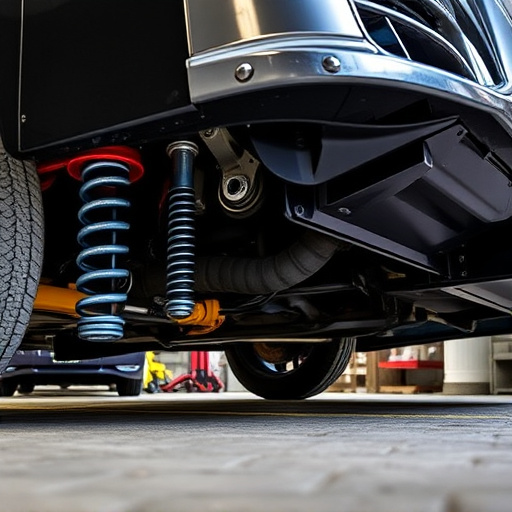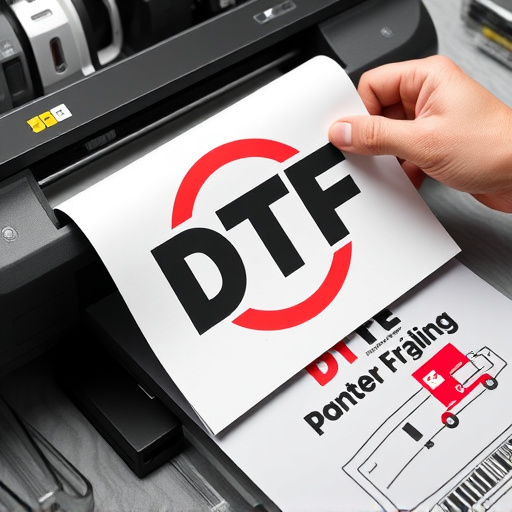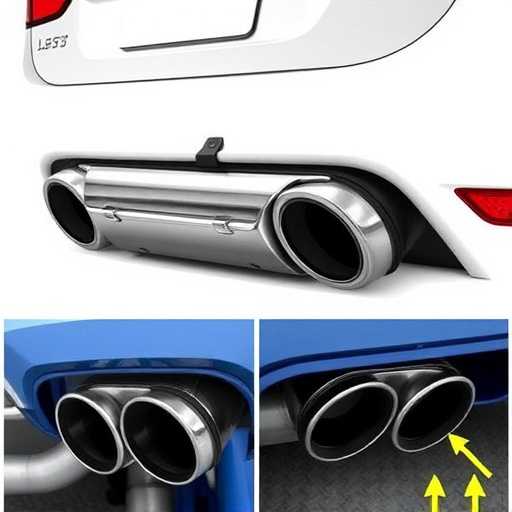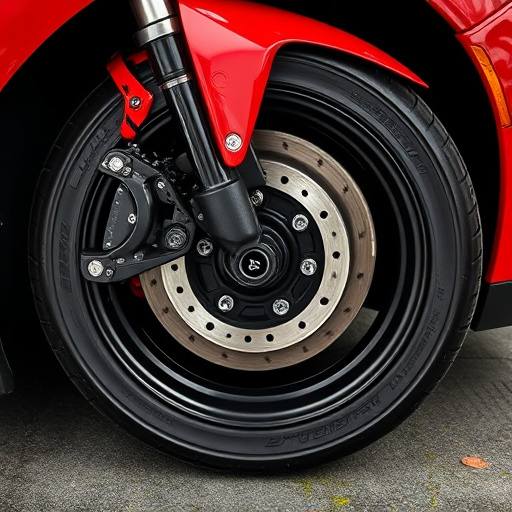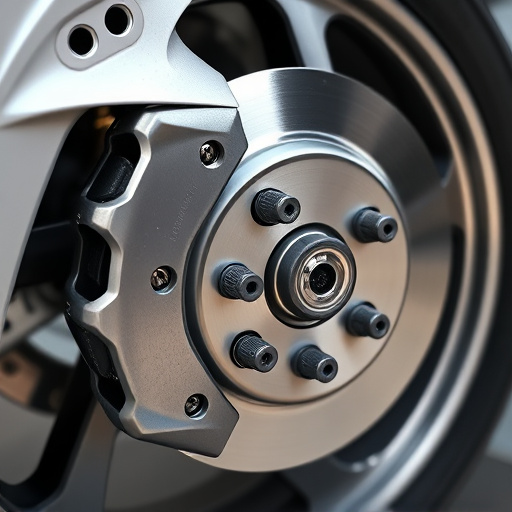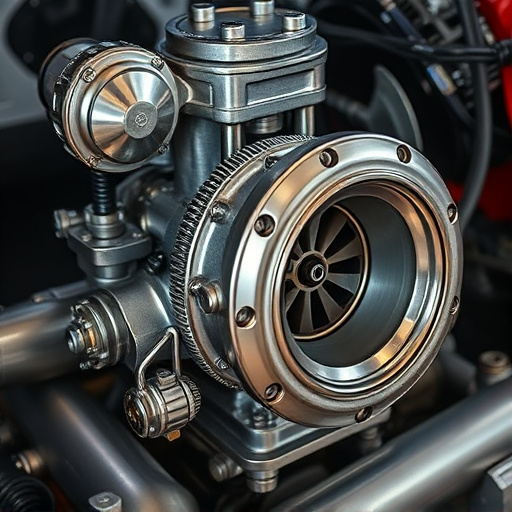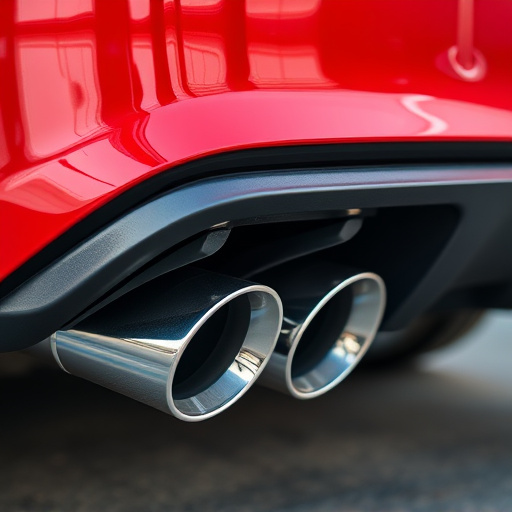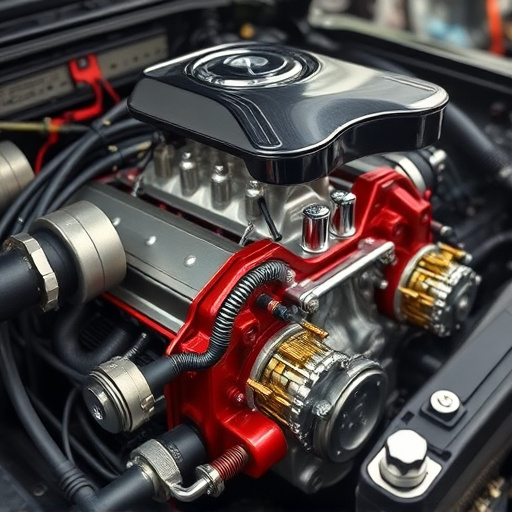The car suspension system smooths road irregularities, connects wheels to chassis, and ensures tire grip for handling and comfort. Key components like springs and shock absorbers work together to maintain tire contact, enhancing performance. Custom upgrades offer personalized dynamics, while related parts like brake pads and exhaust systems optimize overall driving experience. Tire wear patterns reveal suspension health issues, such as misalignment or worn components, encouraging timely maintenance. A well-maintained suspension system prolongs tire lifespan by preventing uneven wear and enhancing grip.
The car suspension system plays a crucial role in vehicle performance and safety, yet its impact on tire wear is often overlooked. This article delves into the intricate relationship between these two critical components. We begin by explaining the fundamentals of car suspension systems and how they influence driving dynamics. Next, we explore common tire wear patterns and their underlying causes. Finally, we examine the direct correlation between suspension components and tire lifespan, providing insights for drivers to optimize both.
- Understanding Car Suspension System Basics
- Tire Wear Patterns and Their Causes
- The Direct Impact of Suspension on Tire Life
Understanding Car Suspension System Basics

A car’s suspension system is a complex network designed to ensure optimal vehicle handling and comfort. It acts as the bridge between the wheels and the chassis, facilitating smooth movement over uneven terrains. The primary function is to support the vehicle, absorb shocks, and maintain tire contact with the road surface. This system consists of various components, such as springs, shock absorbers, control arms, and stabilizers, working together to keep the car stable and maneuverable.
At its core, the suspension system influences how a car interacts with the road, affecting acceleration, braking, and cornering. For instance, well-maintained suspension enhances tire grip, leading to improved braking performance and better control during sharp turns. Upgrades like coilover kits can offer fine-tuned adjustments for personalized handling characteristics, enhancing overall driving dynamics. Other components, such as brake pads and cat-back exhaust systems, while not directly part of the suspension, contribute to the overall driving experience by ensuring efficient braking and optimizing engine performance, respectively.
Tire Wear Patterns and Their Causes

Tire wear patterns can offer valuable insights into the condition of a car’s suspension system and overall health. Regular inspection reveals several common causes of tire degradation. One prominent pattern, known as “wear curves,” indicates uneven tire wear, often pointing to misaligned wheels or worn suspension components. For instance, excessive wear on one side of a tire could signal a suspended arm bushings issue or a tilted wheel base caused by damaged control arms or ball joints.
Another significant factor is the role of brake pads and exhaust mufflers (including muffler tips). Prolonged braking can lead to increased tire wear, especially if the brake pads are worn unevenly. Similarly, worn or improperly installed exhaust mufflers might cause localized tire damage around the muffler tips due to heat transfer and vibrations. These visual cues can guide drivers towards potential issues, prompting them to address problems with their car’s suspension system before they escalate.
The Direct Impact of Suspension on Tire Life

The car suspension system plays a pivotal role in determining the lifespan and condition of tires. One of its primary functions is to maintain proper tire contact with the road surface, which is essential for optimal grip and handling. A well-tuned suspension ensures that tires are not subjected to excessive wear or uneven pressure distribution, thus prolonging their useful life.
Suspension components, such as shocks and springs, absorb and distribute the impact forces from uneven road surfaces, preventing these forces from being transferred directly to the tires. Poorly maintained or inadequate suspension systems, however, can lead to accelerated tire wear. For instance, worn-out or incorrectly adjusted suspensions may allow for excessive tire roll or misalignment, causing uneven tread depletion and eventual tire failure. High performance parts, including advanced suspension setups, are designed to enhance vehicle dynamics, but they must be tailored to the specific needs of the driver and road conditions to ensure both peak performance and tire longevity.
A well-maintained car suspension system is key to extending tire life and ensuring optimal performance. By understanding the relationship between these two critical components, drivers can navigate roads with enhanced safety and efficiency. Regular suspension checks and timely repairs can prevent premature tire wear, ultimately saving costs and improving overall driving experience. Prioritizing suspension care is a game-changer in maintaining tires’ integrity and longevity.

